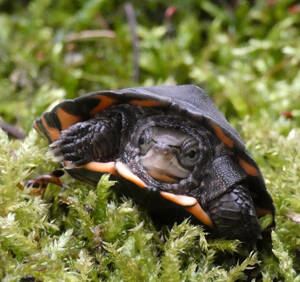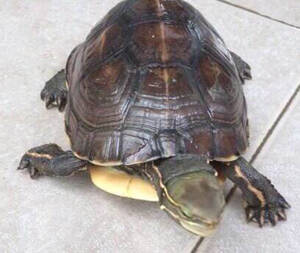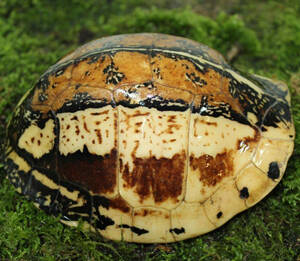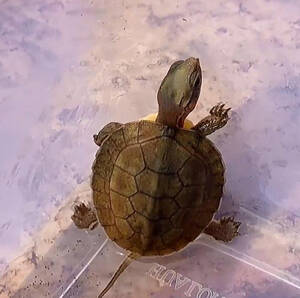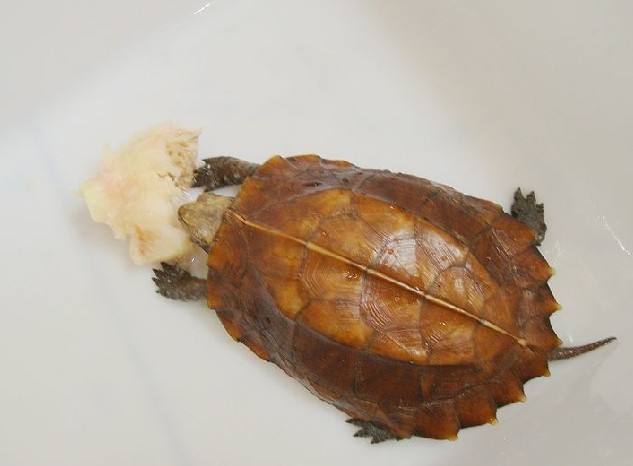Aldabrachelys gigantea
IUCN
LCBasic Information
Scientific classification
- name:Aldabrachelys gigantea
- Scientific Name:Aldabra giant tortoise, Seychelles giant tortoise, Darding giant tortoise, Arnold's giant tortoise
- Outline:Testudines
- Family:Testudines Cryptodira Testudinidae Aldabrachelys
Vital signs
- length:91-122cm
- Weight:159-250kg
- lifetime:200year
Feature
The second largest tortoise in the world.
Distribution and Habitat
The Aldabra giant tortoise is found mainly in the Aldabra Islands of the Seychelles and the islands of the western Indian Ocean. The Aldabra giant tortoise is a terrestrial animal that lives in a variety of habitats, including scrubland, mangrove swamps, coastal dunes and beaches, each with its own unique vegetation. The largest number of tortoises are found in grasslands called "platins". Due to long-term heavy grazing, some areas have developed a habitat called "tortoise turf" where a variety of grasses and herbs grow, which is the natural habitat of several smaller species.
Appearance
Aldabra tortoises are active primarily in the early morning and late evening for a period of less than four hours. They engage in a variety of activities during these periods, including attempts to mate, stretching, walking, eating, sleeping, and defecating. They rest during the rest of the day.
Aldabra tortoises live alone and in groups, tending to congregate in open grasslands. They are most active in the morning when they spend time searching for food. They dig underground burrows or rest in swamps to cool down in hot weather.
Aldabra tortoises are herbivores, feeding mainly on stems, leaves, and buds of local woody plants, and occasionally on carrion. Since fresh water is rarely available in their natural habitat, they get most of their body water from their food.
In captivity, Aldabra tortoises are known to enjoy fruits such as apples, pears, tomatoes, bananas, carrots, peas, beans, almonds, and compressed vegetable pellets.
Details
This tortoise was discovered by humans more than 400 years ago. At that time, people did not realize that it was a long-lived animal. It was not until the most famous Aldabra tortoise, Advita, appeared that people began to study the age of tortoises.
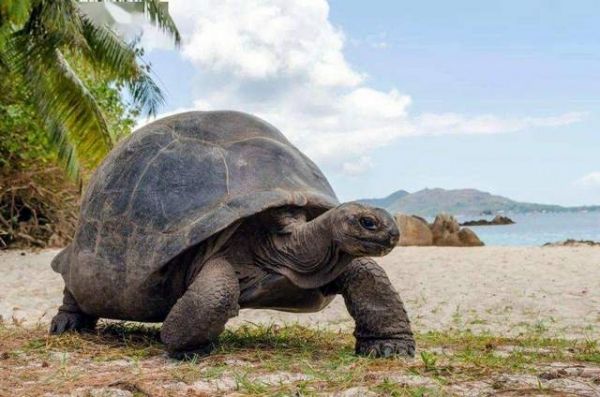
The Sanskrit meaning of Advita is "unique". It was captured by British sailors after landing on the Seychelles in the 18th century. This turtle has little attack power and a good personality, so the sailors gave it as a gift to Robert Clive of the British East India Company. Robert was a tortoise fan. He was very happy to get Advita and placed it with other tortoises in a manor on the outskirts of Kolkata. After Robert's death, Advita was transferred to the Kolkata Zoo in 1875, and it has been settled in the zoo ever since. Who knew that it lived to be 255 years old, survived three keepers, and died in 2006. It is reported that Advita is the longest-lived Aldabra tortoise, but whether there are Aldabra tortoises in the wild that live longer than Advita is still unknown.
The uniqueness of the Aldabra tortoise is that although they are land tortoises, they have strong swimming ability. The largest tortoise can have a carapace of 1.8 meters long, but it can still float easily on the water. On land, the Aldabra tortoise is also a good long-distance traveler. They are not fast, but they can crawl 6 kilometers a day. The hard tortoise shell allows them to continue crawling slowly even if they carry two people.
Aldabra Atoll was listed as a nature reserve in 1976. There are no residents living on the island, and there are no artificial facilities to damage the environment. There is only a natural research center on the main island of Aldabra. Due to the sparsely populated reasons, the Aldabra tortoise has become the largest tortoise population in the world. The population size of the Aldabra tortoise is about five times that of the Galapagos tortoise.
The Aldabra tortoise is one of the few surviving species in the Indian Ocean. Due to years of poaching and encroachment, they are considered vulnerable. Translocation of these tortoises has been unsuccessful, in part due to insufficient attention to habitat interactions with humans. Poaching by humans significantly threatens the chances of future population growth.
Public concern has increased significantly and conservation efforts have been ongoing since the 1960s. The Seychelles Islands Foundation (SIF) under the Seychelles National Parks and Nature Conservation Act has been managing the Aldabra tortoise. In 1982, the Aldabra Ringworm was designated a UNESCO World Heritage Site.
Listed on the IUCN Red List of Threatened Species (IUCN) 1996 ver 3.1 - Vulnerable (VU).
Listed in Appendix Ⅰ, Appendix Ⅱ and Appendix Ⅲ of the Convention on International Trade in Endangered Species of Wild Fauna and Flora (CITES) 2019 Edition Appendix Ⅱ.
Protect wild animals and eliminate game.
Maintaining ecological balance is everyone's responsibility!



